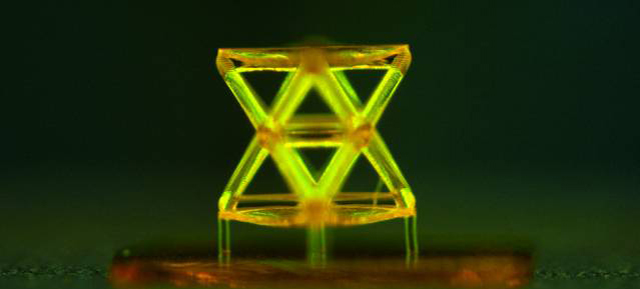MIT engineers have taken inspiration from architecture to create a new material that combines high stiffness with low weight — by using a repeating geometric structure that’s airy, yet remarkably strong.
The new material design has been developed in a collaboration with the Lawrence Livermore National Laboratory, and uses microlattices with nanoscale features to combine “great stiffness and strength with ultralow density”. Essentially, it uses the same principles of lattice work that you find in structures like the
Eiffel Tower to provide strength with the minimum of extraneous material. The research is published in the journal Science.
Usually, stripping away material from a microstructure decreases stiffness and strength, but the researchers have mathematically determined how the geometric structure distributes and directs loads, so that they can trim material away at the nanoscale in places where it won’t be missed.
In fact, the new material, once designed, was then created using a high-precision 3D-printing process called projection micro stereolithography. A single element of its repeating structure is pictured above. In testing, its properties amazed the researchers:
“We found that for a material as light and sparse as aerogel, we see a mechanical stiffness that’s comparable to that of solid rubber, and 400 times stronger than a counterpart of similar density. Such samples can easily withstand a load of more than 160,000 times their own weight.”
In other words, it’s about 400 times stronger than most materials of the same density as it — which is insane. No surprise, then, that the researchers suggest it could be of use in space applications, where low weight is crucial, but not at the expense of strength and stiffness.
But it could be used elsewhere, too. The researchers suggest that it could be used to make portable batteries lighter, say, or any other structure that needs to offer high strength but at low weight. Regardless of where it’s used though, it’s an impressive feat of material design. [Science via MIT]
Picture: MIT
